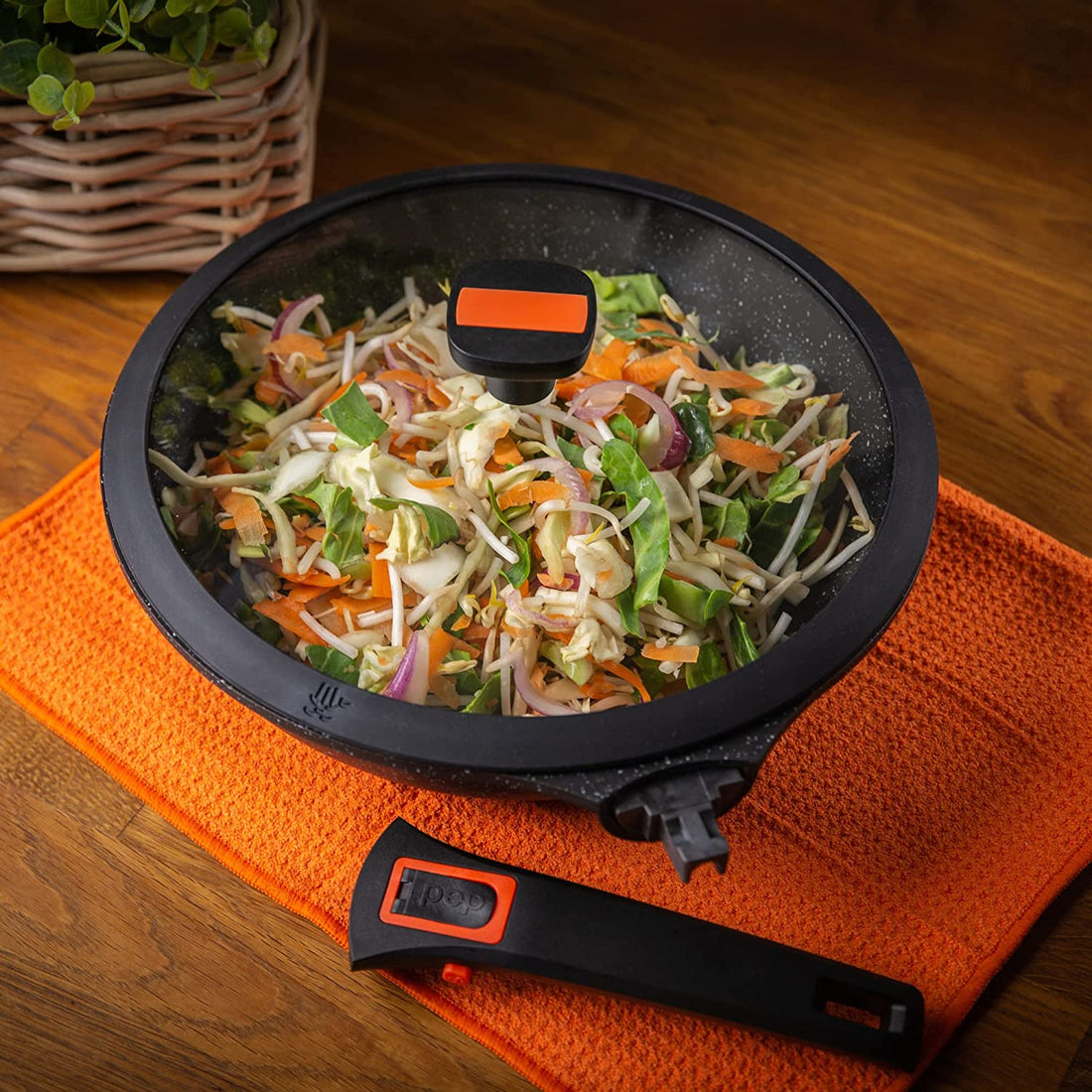Wok Cooking: The Art of Stir-Frying
Wok cooking is a traditional Chinese cooking technique that has gained popularity all over the world. It involves stir-frying ingredients in a wok, a versatile and efficient cooking pot that can be used for a wide range of dishes. Wok cooking is known for its speed, simplicity, and ability to retain the natural flavours of the ingredients. In this article, we will explore the art of wok cooking and provide some tips and tricks to help you master this culinary technique.
History of Wok Cooking
The traditional wok is a round-bottomed cooking vessel that originated in China over 2000 years ago. It was initially used for cooking over an open fire, and its shape allowed for even heat distribution and quick cooking times. Over time, wok cooking became an essential part of Chinese cuisine, and the wok became a symbol of Chinese culture.
Wok cooking was introduced to the rest of the world in the 20th century when Chinese immigrants brought their culinary traditions with them. Today, wok cooking is a popular cooking technique in many countries, including the United States, Australia, and the United Kingdom.
How to Choose a Wok
Choosing the right wok is essential for successful wok cooking. Here are some factors to consider when selecting a wok:
Material: Woks can be made from a variety of materials, including carbon steel, cast iron, stainless steel, and non-stick coatings. Carbon steel is the most traditional material for woks, as it heats up quickly and evenly and is relatively inexpensive. However non-stick is most popular to save time on washing up and help with quick healthy cooking.
Size: Woks come in different sizes, ranging from 25 to 40 centimeters in diameter. The size you choose will depend on the number of people you are cooking for and the type of dishes you plan to make. Our Pep Wok is 29cms ideal for families or batch cooking.
Shape: Woks can be round-bottomed or flat-bottomed. Round-bottomed woks are more traditional and are ideal for stir-frying, but they require a wok ring or stand to stabilize them on a stove. Flat-bottomed woks are more stable and can be used on any type of stove. The Pep Wok is flat bottomed and works on all hob types, including induction.
Handle: Woks can have one or two handles. One-handled woks are more traditional and are easier to maneuver, while two-handled woks are more stable and can be used for larger dishes. Woks can take up a lot of space in the cupboard which is why a removable handle wok is a great addition to your kitchen!
Seasoning Your Wok
Before using your new wok, you need to season it to prevent food from sticking and to create a non-stick surface. Here's how to season your wok:
1. Wash your wok with hot water and soap to remove any manufacturing residue.
2. Dry your wok thoroughly with a clean towel.
3. Heat your wok over high heat until it starts to smoke.
4. Add 2-3 tablespoons of oil (vegetable or peanut oil works well) to the wok and swirl it around to coat the entire surface.
5. Use tongs to rub the oil into the surface of the wok.
6. Turn off the heat and let the wok cool down completely.
7. Wipe out any excess oil with a paper towel.
Repeat this process several times until your wok develops a dark patina and becomes non-stick.
Wok Cooking Techniques
Wok cooking involves several techniques that allow you to cook ingredients quickly and evenly while retaining their natural flavors and textures. Here are some essential techniques to master:
Stir-frying: Stir-frying involves cooking small pieces of food quickly over high heat while stirring constantly. This technique allows you to cook ingredients evenly and quickly while retaining their natural flavors and textures.
Deep-frying: Deep-frying involves immersing food in hot oil until it is crispy and golden brown. This technique is ideal for making crispy chicken or vegetables.
Steaming: Steaming involves cooking food over boiling water using a steamer basket or rack. This technique is ideal for cooking delicate ingredients like fish or vegetables.
Braising: Braising involves cooking food slowly in liquid until it becomes tender and flavorful. This technique is ideal for tougher cuts of meat or root vegetables.
Tips for Successful Wok Cooking
Here are some tips and tricks to help you master the art of wok cooking:
1. Prepare all your ingredients before you start cooking. Wok cooking is fast-paced, so having everything ready beforehand will help you stay organized.
2. Use high heat. Wok cooking requires high heat to cook ingredients quickly and evenly.
3. Keep the ingredients moving. Stirring constantly helps prevent ingredients from sticking and ensures even cooking.
4. Add ingredients in stages. Start with ingredients that take longer to cook (like meat or root vegetables) and add quicker-cooking ingredients (like leafy greens or herbs) towards the end.
5. Don't overcrowd the wok. Overcrowding can cause ingredients to steam instead of stir-fry, which can result in mushy vegetables or tough meat.
6. Use a lid for steaming. Covering the wok with a lid traps steam and helps cook ingredients evenly.
7. Add sauces towards the end. Adding sauces too early can cause them to burn or become too thick.
Wok cooking is a versatile and efficient cooking technique that can help you create delicious meals in no time. By choosing the right wok, seasoning it properly, and mastering essential techniques like stir-frying and steaming, you can become a wok cooking pro in no time. So go ahead and give it a try – your taste buds will thank you!

